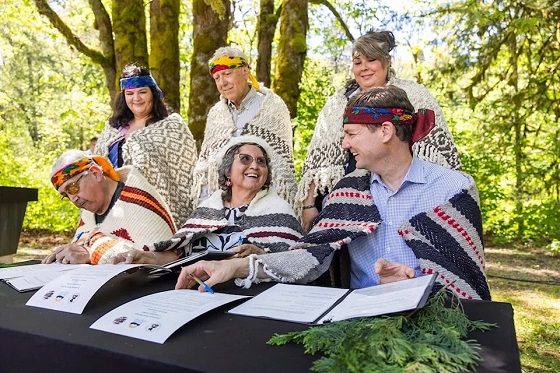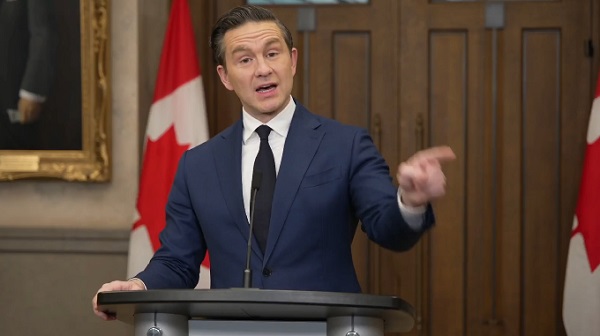Fraser Institute
Dearth of medical resources harms Canadian patients

From the Fraser Institute
The imbalance between high spending and poor access to doctors, hospital beds and vital imaging technology, coupled with untimely access to services, can, and does, have a detrimental impact on patients.
Whether it’s a lack of family physicians or other health-care workers, Canadians know we have a serious health-care labour shortage on our hands. The implications of this shortage aren’t lost on patients (including Ellie O’Brien) who’ve possibly faced delays in accessing organ transplants because potential donors need a regular family doctor to screen them to begin the transplant process.
Given these access issues, coupled with some of the longest recorded wait times for medical procedures on record, is it any wonder that Canadians are dissatisfied with how their provincial governments handle health care?
While one instinct might be to demand governments spend more on health care, it’s not clear we’re getting good value in return for what’s already being spent. In fact, compared to 29 other high-income countries with universal health care, Canada spent the most on health care as a share of the economy at 12.6 per cent in 2021, the latest year of available comparable data (after adjusting for differences in the age structure of each country’s population).
But what do we get in return for this spending?
As far as medical resources go, not a whole lot. In 2021, Canadians had some of the fewest medical resources in the developed world. Out of 30 high-income countries with universal health care, Canada ranked 28th on physician availability at 2.8 per 1,000 people, far behind countries such as seventh-ranked Switzerland (4.5 physicians per 1,000) and tenth-ranked Australia (at 4.3 physicians per 1,000).
But doctors are just one part of the puzzle. Canada also ranked low on available hospital beds (23rd of 29 countries), meaning patients often face delays for hospital care. It can also mean that patients end up being treated for their illness outside a traditional patient room—such as a hospital hallway, a phenomenon that has spread to many provinces.
We also see a low availability of other key medical resources including diagnostic equipment. In 2019, Canada ranked 25th of 29 comparable countries with universal health care on the number of MRIs (10.3 units per million people) compared to top-ranked Japan, which had four times as many MRIs as Canada. And we ranked 26th out of 30 countries on CT scanners (14.9 scanners per million people) compared to second-ranked Australia, which had five times as many CT scanners. It’s also worth noting that a large a portion of Canada’s diagnostic machines are remarkably old.
It’s no accident that countries such as Australia, which actually spend less of its economy on health care compared to Canada, perform better than Canada on measures of resource availability and timeliness of care. Unlike Canada, Australia embraces its private sector as an integral part of its universal health-care system. With 41 per cent of all hospital care in Australia occurring in private hospitals in 2021/22, private hospitals can act as a pressure valve for the entire system, particularly in times of crisis. Indeed, the country outperforms Canada on measures of timely access to family doctor appointments, specialist care and non-emergency surgery, and has done so regularly for years.
The imbalance between high spending and poor access to doctors, hospital beds and vital imaging technology, coupled with untimely access to services, can, and does, have a detrimental impact on patients. For some, this problem can be life threatening. Without genuine reform based on real world lessons from higher performing universal health-care countries including Australia, it’s impossible to reasonably expect our health-care system to improve despite its hefty price tag.
Author:
Alberta
Calgary mayor should retain ‘blanket rezoning’ for sake of Calgarian families

From the Fraser Institute
By Tegan Hill and Austin Thompson
Calgary’s new mayor, Jeromy Farkas, has promised to scrap “blanket rezoning”—a policy enacted by the city in 2024 that allows homebuilders to construct duplexes, townhomes and fourplexes in most neighbourhoods without first seeking the blessing of city hall. In other words, amid an affordability crunch, Mayor Farkas plans to eliminate a policy that made homebuilding easier and cheaper—which risks reducing housing choices and increasing housing costs for Calgarian families.
Blanket rezoning was always contentious. Debate over the policy back in spring 2024 sparked the longest public hearing in Calgary’s history, with many Calgarians airing concerns about potential impacts on local infrastructure, parking availability and park space—all important issues.
Farkas argues that blanket rezoning amounts to “ignoring the community” and that Calgarians should not be forced to choose between a “City Hall that either stops building, or stops listening.” But in reality, it’s virtually impossible to promise more community input on housing decisions and build more homes faster.
If Farkas is serious about giving residents a “real say” in shaping their neighbourhood’s future, that means empowering them to alter—or even block—housing proposals that would otherwise be allowed under blanket rezoning. Greater public consultation tends to give an outsized voice to development opponents including individuals and groups that oppose higher density and social housing projects.
Alternatively, if the mayor and council reform the process to invite more public feedback, but still ultimately approve most higher-density projects (as was the case before blanket rezoning), the consultation process would be largely symbolic.
Either way, homebuilders would face longer costlier approval processes—and pass those costs on to Calgarian renters and homebuyers.
It’s not only the number of homes that matters, but also where they’re allowed to be built. Under blanket rezoning, builders can respond directly to the preferences of Calgarians. When buyers want duplexes in established neighbourhoods or renters want townhomes closer to work, homebuilders can respond without having to ask city hall for permission.
According to Mayor Farkas, higher-density housing should instead be concentrated near transit, schools and job centres, with the aim of “reducing pressure on established neighbourhoods.” At first glance, that may sound like a sensible compromise. But it rests on the flawed assumption that politicians and planners should decide where Calgarians are allowed to live, rather than letting Calgarians make those choices for themselves. With blanket rezoning, new homes are being built in areas in response to buyer and renter demand, rather than the dictates of city hall. The mayor also seems to suggest that city hall should thwart some redevelopment in established neighbourhoods, limiting housing options in places many Calgarians want to live.
The stakes are high. Calgary is not immune to Canada’s housing crisis, though it has so far weathered it better than most other major cities. That success partly reflects municipal policies—including blanket rezoning—that make homebuilding relatively quick and inexpensive.
A motion to repeal blanket rezoning is expected to be presented to Calgary’s municipal executive committee on Nov. 17. If it passes, which is likely, the policy will be put to a vote during a council meeting on Dec. 15. As the new mayor and council weigh changes to zoning rules, they should recognize the trade-offs. Empowering “the community” may sound appealing, but it may limit the housing choices available to families in those communities. Any reforms should preserve the best elements of blanket rezoning—its consistency, predictability and responsiveness to the housing preferences of Calgarians—and avoid erecting zoning barriers that have exacerbated the housing crisis in other cities.

Austin Thompson
Fraser Institute
Courts and governments caused B.C.’s property crisis—they’re not about to fix it

From the Fraser Institute
By Bruce Pardy
In British Columbia, property rights are in turmoil. The B.C. Supreme Court recently declared that Aboriginal title exists on 800 acres of land in Richmond, a suburb of Vancouver. Aboriginal title, said the court, is “senior and prior” to fee simple interests. In the shadow of the decision, given the implications, Aboriginal title claims are receiving more attention. Kamloops and Sun Peaks ski resort are targets in one such claim. Meanwhile, the B.C. government has been conferring Aboriginal title across the province too. It continues to make agreements, such as on Haida Gwaii, to transfer control over land use in the province.
Courts and governments have caused this problem. The framers of Canada’s new constitution, adopted in 1982, excluded rights to private property. But at the last hour, they guaranteed existing Aboriginal rights and title. Over decades, the Supreme Court of Canada has expanded the scope of those rights. The recent decision about Richmond is a culmination of its work. That decision is under appeal, first to the B.C. Court of Appeal. After that, we may find out if the Supreme Court approves. But that could take years.
It’s not just the courts. In 2015, the Trudeau government agreed to implement the United Nations Declaration on the Rights of Indigenous Peoples (UNDRIP). UNDRIP says that Aboriginal groups have the right to own, use, develop and control any lands that they traditionally occupied or used. In 2019, the B.C. legislature incorporated UNDRIP into BC law. Known as DRIPA, the statute requires B.C. law to be consistent with UNDRIP. The NDP government has been granting Aboriginal title and control across the province accordingly.
What can be done? The Canadian constitution has an onerous amending formula. Repealing the section on Aboriginal rights would be next to impossible. So would adding private property guarantees to the Charter. But last week, Dwight Newman, professor of law at the University of Saskatchewan, suggested an alternative in the Post. Rather than attempt wholesale change, he proposed an amendment specific to B.C.
Section 43 is one of the ways to amend the Canadian constitution. It allows changes “in relation to any provision that applies to one or more, but not all, provinces.” The requirements are simple. The legislature in one province and the federal Parliament must both pass a resolution declaring the amendment. That’s it. Such a resolution, Newman suggests, could guarantee that private property in B.C. has priority over Aboriginal title.
He might be right. Section 43 has been used, for example, to alter constitutional denominational school rights in Quebec and Newfoundland. In 1993, New Brunswick used Section 43 to add a provision to the Charter about linguistic rights in the province.
But Section 43 might be narrower than hoped. The New Brunswick amendment was not challenged in court at the time of its enactment. So, yes, Section 43 was used to change the Charter, but not with judicial benediction. Moreover, the Supreme Court has not considered the ways in which Section 43 can be used. Section 43 amendments so far have been minor, mere “tweaks” to the constitutional order. We do not know what meaning the Court might give to “any provision that applies to one province.” It could mean any new provision, but more likely it means any existing provision that applies only to the province. Which would rule out using Section 43 to protect property rights from Aboriginal title in B.C. If the Court allowed Section 43 to be used for that purpose, then Section 43 could theoretically be used for anything, including amending the Charter wholesale until each province had its own version.
Even if Section 43 could be used to fix the property mess, it requires both the province and Ottawa to act. In addition, B.C. legislation requires that such changes be first approved by referendum. The B.C. and federal governments have helped to cause the crisis and continue to do so. They seem intent on undermining the system of land tenure in their own society. They are not likely to disrupt the constitution to frustrate their own work.
Moreover, there are other, simpler places to begin. The federal government could reverse its support for UNDRIP. The B.C. legislature could repeal DRIPA. Neither sitting government will do that. Few political actors will step out of line on Aboriginal questions, even to defend the country’s land, economy, and people. Will we discover whether there is anything more Canadian, after all, than acquiescence? In Canada, truth and reconciliation has morphed into fiction and capitulation.
Canada’s property crisis runs deep, and not just in B.C. Aboriginal rights are widely regarded as the natural and proper order of things. Special status for Aboriginal people is deeply ingrained in Canadian culture as well as the constitution. But it is dead wrong. Legal rights should not depend on lineage or group affiliation. Everyone born in Canada is native to the place. In a free country, laws apply not to distinctive peoples, but to individual people and their private property.
-

 Crime2 days ago
Crime2 days agoCBSA Bust Uncovers Mexican Cartel Network in Montreal High-Rise, Moving Hundreds Across Canada-U.S. Border
-

 Environment2 days ago
Environment2 days agoThe Myths We’re Told About Climate Change | Michael Shellenberger
-

 Health2 days ago
Health2 days agoLack of adequate health care pushing Canadians toward assisted suicide
-

 Alberta1 day ago
Alberta1 day agoATA Collect $72 Million in Dues But Couldn’t Pay Striking Teachers a Dime
-

 Artificial Intelligence2 days ago
Artificial Intelligence2 days agoAI Faces Energy Problem With Only One Solution, Oil and Gas
-

 Media1 day ago
Media1 day agoBreaking News: the public actually expects journalists to determine the truth of statements they report
-

 Artificial Intelligence1 day ago
Artificial Intelligence1 day agoAI seems fairly impressed by Pierre Poilievre’s ability to communicate
-

 National1 day ago
National1 day agoWatchdog Demands Answers as MP Chris d’Entremont Crosses Floor









